Analog Forever has an Interview: Gary Ho of MINT Camera – The Rollei 35 AF Story
Interesting read on what it takes to design a new film camera in 2024.
Previously: Rollei 35AF pre-order, Rollei 35AF
Personal ramblings on photography
Analog Forever has an Interview: Gary Ho of MINT Camera – The Rollei 35 AF Story
Interesting read on what it takes to design a new film camera in 2024.
Previously: Rollei 35AF pre-order, Rollei 35AF
Sebastian Schlüter wrote in 2018 about The magic of Fuji Frontier SP-3000.
Fuji Frontier is the product line moniker for minilab solutions from Fujifilm. In the early 2000 their minilab Fuji Frontier was the reference for film processing and printing, and one of its main attribute is that the printing phase was done digitally. Instead of optically enlarging the image, you put the source film transparency into the scanner, and it will print the images on photographic paper (RA-4 process). And the SP-3000 scanner, the latest model that was part of that minilab system, is still thought after as it produces high quality images out of the box. This was part of the magic (that can’t be distinguished from technology). Just to add how this was revolutionary, it allowed producing mini contact sheets, and it allowed printing slide film without intermediate negative or without inversible (positive) photographic paper. As a business, you could charge 5-10$ extra to store the scans used to print on a CD. Your 1 hour photolab likely used one of these, or its competitor like Noritsu, Agfa or Kodak.
One of the key point of the Frontier is that is does its work fast and automatically. Scanning is always a lengthy process and hard to tune to get good results. The Frontier integrates all of that. Other alternatives are Noritsu who offers a higher resolution, and Kodak Pakon, that requires 20+ years old Microsoft Windows XP to drive it, but is much smaller. Acquisition costs for a Frontier SP-3000 starts at CAD6,000 on the used market and the device takes a huge amount space, so does the Noritsu, and have the same requirement for maintaining the same operating system.
The film to digital workflow is either expensive, slow or poor quality. DSLR scanning provides a good DIY alternative that is reasonably priced if you already have the camera and a proper setup rival dedicated film scanner on many aspects.
Previously: How film commercial processing and scanning is done
Hammish Gill for 35mmc posted Harman Phoenix 120 – My First Rolls.
Interesting to see what a new colour emulsion by a company that doesn’t have decades of colour film experience brings. Whatever we might think of the result, it is very welcome and encouraging. Let’s hope the whole thing doesn’t get discontinued.
Previously: News: Harman Phoenix now in 120
It’s up. If you are curious, the Rollei 35AF is available for pre-order for CAD1106 in Silver. Add CAD40 for black.
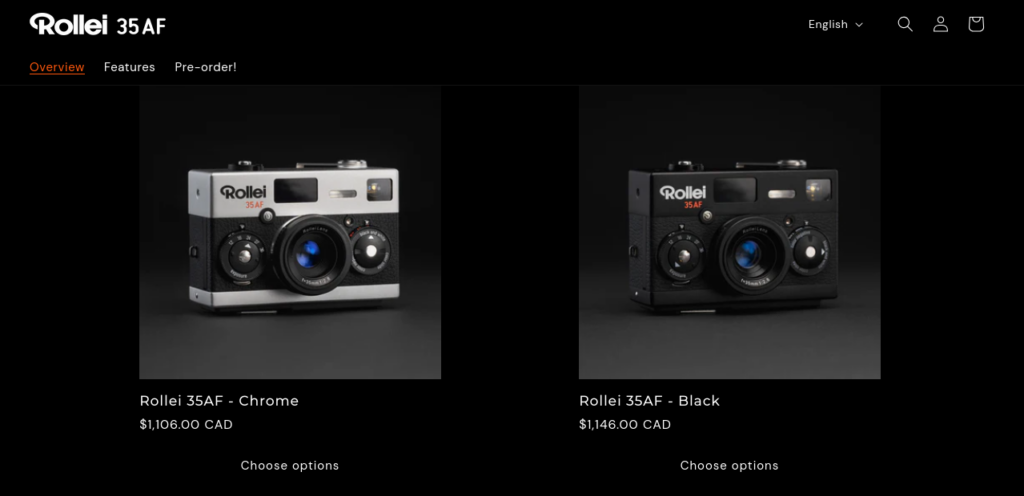
Previously: Rollei 35AF
Apparently it’s still hard to get a Fujifilm X100VI.
In an April 2024 interview, Fujifilm admits that they make 15,000 units a month, which is twice as much as for the previous model, and that they are looking at increasing it. Also the rumor has that they have a 500,000 order backlog. That number is unconfirmed, but with some light math, we can guesstimate it would take over 33 month to fulfill!
This backlog has people that really want one, people that ordered from multiple retailer as to jump the queue, people that are still undecided, and scalpers.
It seems that today the only way to get one is:
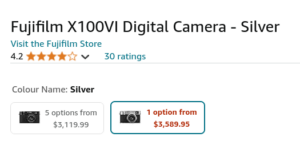
At that point I have to forego the trying it out phase, and have to place an order if I want one. With a little luck the X100VII will be announced and either it will be cheaper or I will have to move up to the next level.
Meanwhile, it’s not like I don’t have any camera to shoot. My X-Pro1 still works (I got it repaired a few years ago) and the X-T3 as well. Not forgetting that the Olympus E-P1 still works, unlike the G7X MkII that can’t be replaced, and the 5DMkII is still in order. Lately, I also have been using an original Ricoh GR Digital 2 (the small sensor from 2007). And I have a stash of film in the freezer with both 35mm and medium format. Maybe I don’t need a new camera after all…
Previously: Fujifilm once struggled to sell cameras…, Fujifilm upgrades
Kosmofoto tells us Harman Technology releases 120 version of Phoenix 200 film.
Harman Technology is the owner of Ilford, the well known black & white film photography brand and Kentmere. Phoenix is their brand new colour negative film. It’s an original emulsion, not a repackaging that was released in 135 format last December. The 200 ISO film is now available in 120 format.
This is great news.
From 2023, The Widelux Revival Project on SilvergrainClassics.
It is about a new venture started by two members of SilvergrainClassic and Susan and Jeff Bridges (yes that Jeff Brigdes) to recreate the Widelux. Jeff Bridges started using it in 1984, bringing on set a Widelux F8 camera to shoot behind the scenes, portraits and others. And like any vintage camera, they are getting old and will fail, if they are not outright temperamental, with little options to get spare parts.
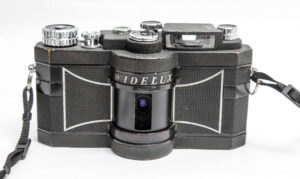
The design of the Widelux is rather unusual, and its Japanese manufacturer ended production in 2000. It’s a camera with a swinging lens to shoot 126 degrees wide on 135 film, or on 120 film. Jeff Bridge’s use of it was unusual as it’s a camera aimed at landscape photography to be used on a tripod as the shot take a couple of seconds at 1/15 shutter speed. This is unlike the Fujifilm TX-1 / Hasselblad X-Pan.
The Widelux F7, using 135 film, did cost USD750 in 1988, while the Widelux 1500, using 120 film, cost USD4500.
The German Noblex and Russian Horizon were similar in function.
Time will tell if the revival happens. This require a great deal of re-engineering and the result will probably be quite expensive, both as it is niche and likely costly to make.
I already talked about my Canon G7X Mk II giving up the ghost. Turns out that Canon repair policy is a flat rate USD650 and you get a replacement except there are none available and people in the Canon forums say they end up not having a camera… and the Mark III is unobtainium everywhere I looked. “Check with you re-sellers” Canon said. Aha. That doesn’t feel like good customer service. Rumors are that Canon is quietly discontinuing P&S, leading me think that I should get a Sony (ZV-1 II) as this is a camera I bought for video.
Anyway.

I pulled out of my bag my old Olympus E-P1. I bought this m4/3 camera back in 2010 to supplement my Canon 5D MkII, and mostly replaced using it with a Fujifilm X-Pro1. I used it a lot when we crossed the country on a train as it was the convenient camera suitable in that situation. I still had my 5D MkII in the bag though.
Turning it back on, the IS1 icon on the screen is red. Not good.
If the image stabilizer icon blinks in red on the monitor, it indicates a failure of the image
stabilizer function. If you take a picture as is, the composition may be off. Consult your
Olympus Authorized Service Center
It’s probably not worth it to take it in. I’ll have to live without IBIS, which should be fine. I can keep shooting with it. Like a lot of other cameras, I think what I dislike the most is the lack of viewfinder, and it’s probably my biggest regret.
Using manual (adapted) lenses is great on a Fujifilm X. I have a set of Canon FD Macro lenses that are terrific.
At first you might have issues as the shutter doesn’t fire when such lens is on the camera. The camera thinks you don’t have a lens and therefor prevents you from firing the shutter. You need to enable “Shoot without lens”. It’s in the manual but not explicitely explain, and it’s inconsistent depending on the camera model. As I have both a X-Pro1 and an X-T3, this confused me as I couldn’t find it on the X-T3.
Fotodiox, who sells mount adapters, has you covered in their help guide. But really Fujifilm, couldn’t you at least be consistent? It’s not even “later models changed it”. X-Pro2 does it differently from the X-Pro1 and X-Pro3.
Here are some instructions:
On the Fujifilm X-Pro1:
1. Press the button. Go to the 3rd page of the :
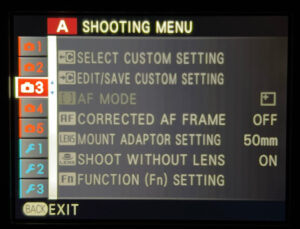
2. Select :
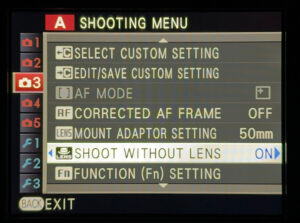
3. Make sure it is :
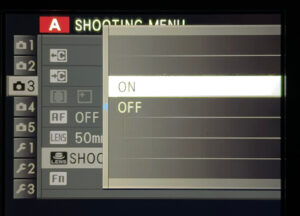
On the Fujifilm X-T3:
1. Press the button. Go to the menu:
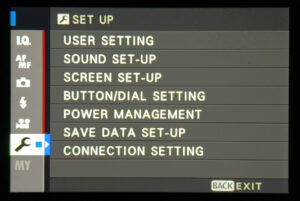
2. Select :
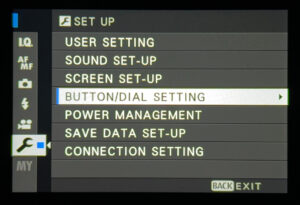
3. On the second page, select to be :
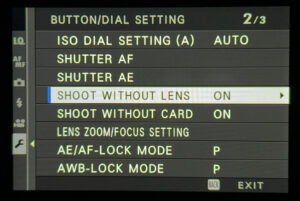
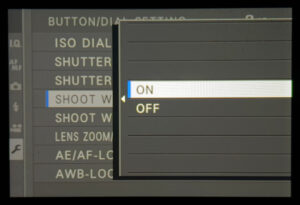
Optionally, you should set the lens focal length. This helps the camera deciding shutter speed and others, and also this get added to the Exif meta data.
On the Fujifilm X-Pro1:
1. Go to the same page 3 and select :

2. Select a lens:

3. If you need to change the focal length select :
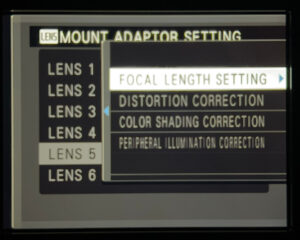
4. Set the focal length:
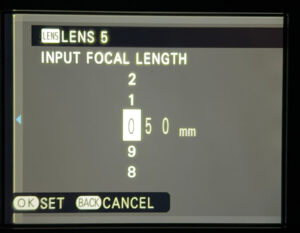
On the Fujifilm X-T3:
1. Go to the menu:
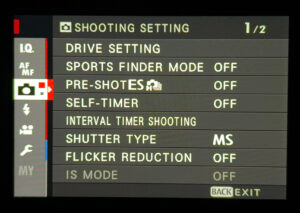
2. Go to the second page select :
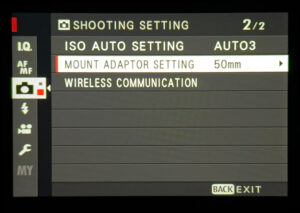
3. Select one of the 6 focal lengths:
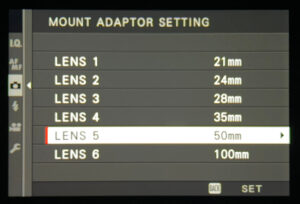
4. If you need to change it, select and set the focal length:
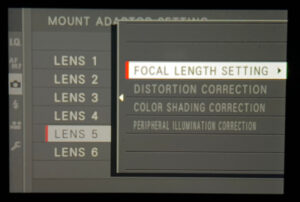
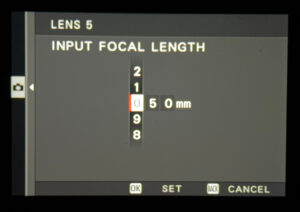
You should now be set. Remember if you use a different lens to set the focal length. You don’t need to reset the to for use in other cases.
I have been going through a back log of archiving film. I’m bad, as the most recent was 10 year old. Also that mean I haven’t shot film in 10 years. After some manual labour and digging for the metadata, I pulled the light table and went through some older archived film, including slide film. They are all in translucent archival “PrintFile” sheet, so they can be examined directly. Here is the view of the light table with such a page:
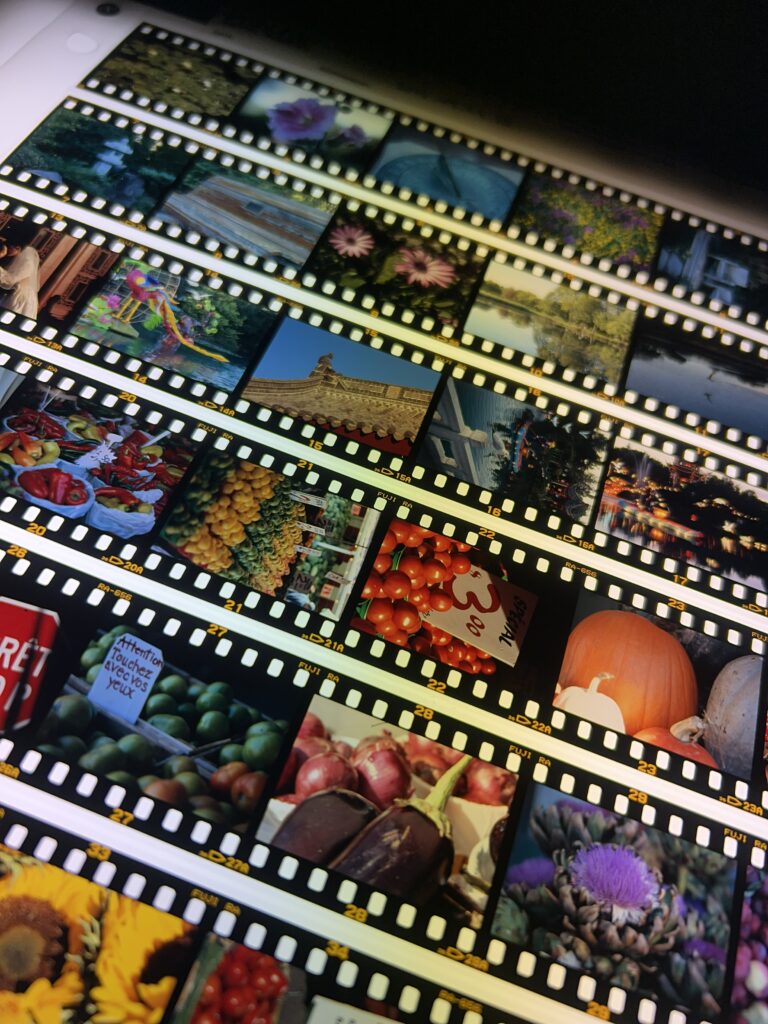
WOW. This is what I remember of the joy of shooting slide film: looking at the small images on the table. It’s like magic. Not even the thumbnails on the computer bring that joy. It must be the backlit transparency, the punchy colours. And I never shot slide film in medium format.
The experience
But how was it to shoot colours slide film? Even in 2000 it was expensive, more that colour negative. The rolls, the processing all more expensive, and harder to find. That put aside, it was also harder to shoot. Unlike for colour negative, inversible film (the other name of slide film) had much less latitude exposure (around ±1/2 a stop). While colour negative could easily get 2-4 stops each way and still get something usable, slide film couldn’t. And in a very contrasted scene you might have blown highlights or very dark shadows. Metering had to be much more precise and the resulting image could hardly be improved, which also made a lot of consumer point and shoots not suitable.
Slide film remained the preferred format for professional photography in publishing, until they switched to a digital workflow.
The results
Unlike negatives that needs to be printed, and for which the final results were linked to both the printing machine and its operator, slide appeared as close to the “final” product, and in the early days couldn’t even be printed as is. Slide film is the closest to JPEG SooC (Straight-out-of-Camera) in the digital world, and today, if you shoot Fujifilm camera, there are built-in the film simulations, and lot of user created settings. With the Lumix S9, the addition of LUT for stills also reinforce that trend, where cameras adopt a colour rendition model.
In the end
Now this is just nostalgia. Slide film today cost a lot, something like CA$35 a roll either in 135 (36 exposures) or 120 (I get 12 on my 6×6 TLR) and there is mostly only the new Kodak Ektachrome 100 from 2018 (after it got discontinued in 2012). I vividly remember as a roll was less than CA$10, that a price increase in 2004 triggered my purchase of my first DSLR, a Canon 20D. In retrospect I regret maybe not shooting more of it while it was still reasonable, and while these amazing Fujifilm Velvia and Provia were still relatively easily available. Some calculated the Kodachrome, the parent of all slide films, that got discontinued in 2010, cost more adjusted for inflation than Ektachrome in 2024 when it was released in 1935.
So should you shoot slide film? If you have a film camera that works well and you can measure the exposure properly, you should absolutely try. Make sure you have a way to get it processed as well. Not all labs do it.
Previously: What slide film taught me.